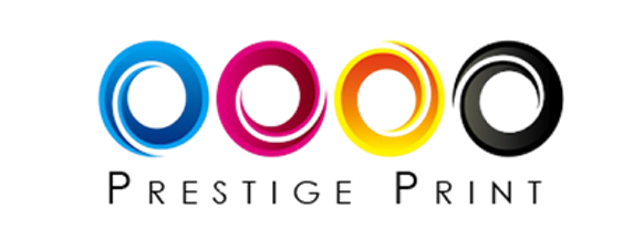Starting Solids: Baby-Led Weaning
There has been a lot of talk lately about baby-led weaning (often also referred to as BLW or some refer to it as infant self-feeding) as an alternative to starting with puréed foods using a spoon. There are internet sites (e.g. www.babyledweaning.com), blogs, and Facebook forums about BLW. However, there are many unanswered questions so this article looks at what baby-led weaning is, what advantages it may offer, the possible disadvantages and the latest research.
Download article on First Foods For Prems here
What is baby-led weaning?
Baby-led weaning[1] is a method of adding complementary foods to a baby’s diet of breastmilk. The infant feeds themselves finger foods instead of being spoon-fed purées by an adult. They are offered a range of easy to handle pieces of foods to provide a balanced diet from around 6 months. The infant often starts by picking up, playing and licking the food, before progressing to actually eating it. This exploration of texture and smell is often regarded as important for development of the eating process. Initial self-feeding attempts often result in very little food ingested but they will soon start to swallow and digest what is offered. Infants typically begin self-feeding around 6 months, although some will reach for food as early as 5 months and some will wait until 7 or 8 months. The intention of this baby-led process is that it is tailored to suit each particular infant and their personal development. Self-feeding supports the child’s motor development in many vital areas, such as their hand-eye coordination and chewing. It encourages the child towards independence and often provides a stress-free alternative for meal times, for both the child and the parents. Baby-led weaning means no purées, no ice cube trays, no food processor, no potato masher, no baby rice, and no weird fruit and vege combos. It is about your infant starting off eating food that you enjoy with your family. Of course there are a few exceptions and care needs to be taken with foods that may present a choking hazard or have allergy issues and salt should not be added.
Baby-led weaning allows babies to control their solid food consumption by “self-feeding” from the beginning of their experiences with food rather than food input being controlled by the parent who tends to encourage the infant to finish the bowl they are offering. Supporters claim this self control has a number of benefits over the current advice of spoon feeding. For example, some consider BLW may help prevent obesity, because it lets babies choose how much they eat (like they do when they’re being breastfed). This may encourage them to be more aware of how hungry or full they are. Ultimately, this could lead to better eating habits. They also say it makes babies less fussy as they get older and of course there is also the advantage that specialized food preparation is not required.
Advice on weaning
Through the generations advice on infant feeding has changed significantly. Our mothers typically spoon-fed us puréed food from around 4–5 months of age. In 2002, the World Health Organisation (WHO) changed their infant feeding guideline by extending the recommended duration of exclusive breastfeeding from 4-6 months to six months. As a result the recommended age for starting complementary foods was increased to six months. In New Zealand these recommendations were adopted into policy, although this hasn’t happened everywhere around the world. When babies started weaning at four months of age, they had to be given purées because they were too young to feed themselves. However, there are large differences in development between four and six months of age. Advocates of BLW propose that at six months of age infants are developmentally more advanced and therefore do not require purées or need to be fed by someone else.
[1] The term weaning should not be taken to imply giving up breastmilk, but simply the introduction of foods other than breastmilk.
So what does the Ministry of Health say about BLW? The Ministry’s current advice involves starting with spoon-fed puréed foods when baby is ready (around six months), then moving onto mashed and chopped foods over the next few months. Finger foods are offered from 7–8 months when baby is able to pick them up, bring them to their mouth and chew them. Currently, the Ministry of Health does not recommend baby-led weaning for New Zealand babies. Their reasoning is that there is insufficient research on baby-led weaning. Before the Ministry of Health could recommend baby-led weaning to the public as a safe alternative to current advice, it would need evidence that baby-led weaning doesn’t lead to babies being iron-deficient, not growing well, or having an increased chance of choking. The Ministry would need evidence of the benefits (e.g. preventing obesity) before it could recommend baby-led weaning as the best weaning practice for babies. More research is currently being done on baby-led weaning and the Ministry will review new evidence as it becomes available.
Some recent research
Until the last few years there were very few scientific research papers on BLW and even now the numbers are fairly small, although increasing. A research group at Otago University is leading the way and has recently reviewed the evidence looking at the feasibility of BLW (Cameron et al. 2012). They concluded that “Baby-Led Weaning appears to be a feasible option for introducing complementary foods for many infants and could conceivably have beneficial effects on the infant’s nutrition and development.” However, they noted that many unanswered questions remain, including whether infants following BLW obtain sufficient nutrients, including energy and iron, and if choking and growth faltering are real concerns. They noted an urgent need for a study in which infants and their families are randomized to follow BLW, and their outcomes compared to those of a control group following standard feeding practices.
One of the questions that has been raised about BLW is whether infants are developmentally ready to self-feed by age 6 months. A UK study (Wright et al. 2011) looked at this and drew the following conclusion: “Baby-led weaning is probably feasible for a majority of infants, but could lead to nutritional problems for infants who are relatively developmentally delayed. A policy of promoting self-feeding and family meals in parallel with spoon feeding might be more realistic”. For parents of multiples this is something to be particularly cautious of as infants born preterm can have mild developmental delay. It is suggested that BLW is only realistic if the infant is reaching out for and mouthing objects by the age of 6 months.
It is often stated that one advantage of BLW is that infants learn to self-regulate food intake and this may help prevent obesity in the long term. One recent study does suggest that infants weaned through the baby-led approach learn to regulate their food intake in a manner, which leads to a lower BMI (Body Mass Index) and a preference for healthy foods like carbohydrates (Townsend & Pitchford 2012). However, this was a very small study and larger trials are required to confirm this. How and when babies are weaned could also have a long-lasting impact on how much and what foods they choose to eat later in life, say researchers at Swansea University. Parents taking part in the study said that the babies who were allowed to feed themselves were less fussy about food.
Conclusion
Currently, the Ministry of Health does not recommend baby-led weaning for New Zealand babies due to the lack of research. However, ultimately it is your choice what you decide to do with your babies. One of the key things is to ensure your infants are developmentally ready. In addition it is very important to be cautious with the introduction of foods that may present a choking hazard (e.g. raw apple) or be associated with allergies, especially if there is a family history.
Getting Started with BLW
If you do want to give BLW a try (ensuring that your child is developmentally ready) here are some tips (adapted from www.babyledweaning.com):
Trawl the internet for blogs, info and in particular video clips of BLW babies. You need to feel confident with this approach before you start.
Forget ‘baby food’ and start off with chip-sized pieces of food. This is an easy shape for little 6-month-olds to grip. As their pincer grip develops they will start to handle smaller items.
Good foods to start with are steamed carrots (cooked so they are soft enough that their gums can mush them), cut up cucumber, toast fingers or bits of mango. Avoid things that may present a choking hazard (e.g. raw apple).
There will be mess, so in summer try eating outside. If your dining area has carpet a wipe-clean tablecloth under the highchair is a good idea.
Don’t worry with bowls, just put the food on the highchair tray or table. An easy-to-clean highchair is a must – ideally one that you can take outside and hose off!
Don’t offer too much food at the one time, just a couple of pieces of food will stop them feeling overwhelmed.
Murphy’s Law is that the more effort you put into making something special for the baby, the less likely they are to eat it. Give them bits of what you’re having (within reason of course avoiding thing that present choking or allergy risk). If they hate it, fine, they’re getting their calories from milk anyway. Never force them to eat.
Don’t get too hung up on three meals a day, it may take a while to work up to that. Just do whatever is convenient and your child will soon let you know if they are hungry.
Timing ‘meals’ to between milk feeds seems to be best. Until 12 months of age breastmilk or an alternative is still an extremely important part of their diet.
Because it’s just finger food you aren’t limited to staying in for feeding time. Pack a container with some carrot or cucumber or take a banana.
Let the infant put the food in their own mouth so that they can control it as it moves backwards. If the baby gags, remember that it’s their way of moving food around in the mouth and don’t panic (unless they really are choking). Sometimes exaggerated chewing faces and noises reminds the child to get back on track.
Have a camera ready to capture those first gummy, carroty smiles.
Click on this link to download this document for your reference
References
Cameron SL, Heath A-LM, Taylor RW 2012. How Feasible Is Baby-Led Weaning as an Approach to Infant Feeding? A Review of the Evidence. Nutrients 4: 1575-1609.
Cameron SL, Heath A-LM, Taylor RW 2012. Healthcare professionals’ and mothers’ knowledge of, attitudes to and experiences with, Baby-Led Weaning: a content analysis study. BMJ Open; 2(6):e001542. doi: 10.1136/bmjopen-2012-001542.
Ministry of Health. http://www.health.govt.nz/your-health/healthy-living/food-and-physical-activity/nutrition/baby-led-weaning
Townsend E, Pitchford NJ 2012. Baby knows best? The impact of weaning style on food preferences and body mass index in early childhood in a case–controlled sample. BMJ Open 2012;2:e000298 doi:10.1136/bmjopen-2011-000298




